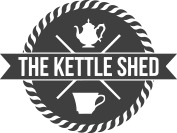You have no items in your shopping cart.
Oolong Tea
About Oolong Tea
Introduction
Oolong tea, sometimes known as Wu Long or Black Dragon, is arguably the world’s most diverse and exciting tea in terms of taste, aroma and origin. Even the appearance of oolong tea varies; from traditional twisted forms like Phoenix Honey to wrap-curled (or ‘tadpole’) forms.
Taste
Comprised of amino acids, flavonoids, sugars, carbohydrates and essential oils, the potent piquancy of oolong can be described as a plethora for the palette. The different types of these teas have remarkably dissimilar tastes, spanning fruity sweet to woody and thick to dry and strong flavours.
The variation of oolong is truly remarkable, with textures ranging from smooth velvet to tickly smoke; not to mention aromas encompassing the odour of roasted nuts to the fine fragrance of flower bouquets.
Regarding taste, oolongs are evidently a mixed bag; nevertheless it would, of course, be sacrilege to brew them in one!
Health
It is held that oolong tea can benefit the health of those who suffer obesity, coronary artery disease, hyperlipidemia, diabetes or high blood pressure. It can lower blood sugar levels, relieve stress and help treat skin problems including eczema, rashes and even wrinkles!
Perhaps more importantly, oolong tea can aid intoxicated bodies as they fight towards sobriety following sustained merry-making. Although it contains less caffeine than black tea, oolong generally yields more caffeine than other types of tea.
The weight-loss properties of the beverage are of particular interest to many, so we think a brief explanation is warranted: drinking oolong triggers the release of pancreatic lipase enzymes, which help break down triglyceride (one of the chemical harbingers of corpulence).
However, these medicinal attributes may wither into insignificance when one learns that oolongs can also be used as a non-toxic domestic cleaner! Simply dry your used leaves, crush them into a powder and wrap them in cheesecloth to construct your very own dust-busting, deodorizing dirt-scourge.
Origin
For over 400 years, using diverse, delicately developed plant strains (called cultivars), traditional Chinese oolong production has taken place through eight phases. In order of implementation, these are: selective plucking, sun-withering, shading, fermentation, roasting, rolling or curling, baking and drying.
However, the term ‘fermentation’ might be better described as ‘enzyme oxidation’. The leaves are scratched and bruised to draw out the enzymes which facilitate the leaf’s metamorphosis into the vessel of unique tastes and aromas that is oolong.
There are four unsubstantiated theories on the origin of oolong. One possibility is that oolong came from the Dragon-Phoenix Tea-Cake tribute tea and, due to its dark colouration, was christened ‘Black Dragon Tea’ (‘black dragon’ is the English translation of ‘oolong’). The ‘Anxi’ theory states that the tea originates from the anxi plant, as discovered by a mister Sulong, Wuliang or Wulong (all of which sound suspiciously similar to oolong). The third theory suggests that the tea was named after the part of the Wuyi Mountain where it was, according to this theory, first found.
Our favourite origin tale tells of a man called Wu Liang (a name which phonologically evolved into Wu Long or Oolong sometime later) who invented it quite by accident. Wu Liang was distracted by a deer whilst picking tea and, by the time he returned to the tea, it was partially oxidised, thus bestowing on hapless Wu Liang the secret to producing a new kind of brew.
The geographical origins of oolong are somewhat easier to pinpoint and, like the broader theories of origin described above, there are four main ones: Fujian Province, Guangdong Province, Taiwan and Wuyi Rock (which produces the most famed and expensive varieties). Due to their close proximity, these four locations have traded information over the years, thus enabling them to refine their oolong cultivation processes.
Brewing Tips
- Oolong should be steeped in hot, rather than boiling, water (approx. 90°c) for at least three minutes using roughly two teaspoons per cup.
- One little known, but splendid, fact concerning the brewing of oolong is that, unlike other teas, the same leaves can be steeped up to six times, tasting better each time. The third or fourth steeping is said to produce the best brew, but it should be noted that the caffeine content of the tea decreases greatly when leaves are reused in this way.
- In China and Taiwan there exists a popular brewing technique known as ‘gongfucha’. Certain tea shops will use a vessel, usually a small lib-bowl called a gaiwan, for short steeps (10 to 60 seconds) to produce tasting cups. Whilst gongfucha may be a proven sales method, its infusive efficiency is disputed and its use should therefore be determined by personal preference.

 Find us on Facebook
Find us on Facebook Follow us on Twitter
Follow us on Twitter Follow us on Instagram
Follow us on Instagram Find us on LinkedIn
Find us on LinkedIn Subscribe on YouTube
Subscribe on YouTube
